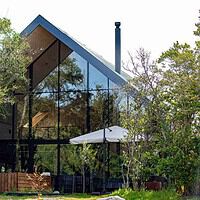Masonry represents some of the most durable building material ever invented. Whether comprised of concrete, calcium silicate, or extruded, molded or dry-pressed clay, brickwork provides a handsome exterior that can last for centuries. Although built to last, masonry is not entirely maintenance-free. Proper care, repair and occasional cleaning can make your exterior brickwork look like new again.
Brick styles
Home improvement specialist, Bob Vila, touts brick as a relatively maintenance-free material that adds aesthetic appeal and energy efficiency to residences, industrial buildings, public facilities and other durable structures. Popular with builders for centuries, brickwork comes in a variety of styles. Long-lasting integrity of brickwork may be ensured by proper cleaning and spot checks for water damage. Repairs performed in a timely manner contribute mightily to the longevity and beauty of brickwork, too.
The American Society for Testing and Materials notes that typical American brick sizes are around 8 by 3 5/8 by 2 ¼ inches. British bricks are slightly narrower, measuring approximately 7 5/8 inches wide. Bricks may include cavities that aid insulation without compromising strength.
Brick maintenance
To ensure long life, brickwork should occasionally be checked for water spotting, algae, moss, mold and mildew infestation. Generally, the least aggressive cleaning approach that can be employed is preferable. Annual cleaning with a garden hose equipped with a spray nozzle removes random dirt, grime and garden detritus.
Deal with stubborn stains that resist hosing with a natural or synthetic bristled brush and a mild bleach-water solution. Wire brushes should be excluded, due to the fact that they can leave gouges and scratches on brickwork. Bob Vila recommends wetting brickwork thoroughly before applying the bleach solution. Failure to wet bricks prior to application can lead to excessive bleaching. Severely stained brickwork may be chemically cleaned by a professional brick cleaning service.

Color restoration
If exposed to sunlight for an extended period of time, brickwork will lose much of its beautiful original color. Spray an old brick wall with a garden hose to reveal what your aged brick could look like after color restorative maintenance.
Professional application of a quality sealer can bring new life to old brickwork by restoring the original color. Small areas of brickwork may be sealed with a hand-held brush; larger areas are best managed with professional quality spray equipment. Some brick sealant brands require the application of multiple coats, while others may restore color and protect valuable brickwork with a single layer of sealer.
Freshly-sealed brickwork must remain untouched for quite some time in order to ensure proper drying. For this reason, brick sealing should be scheduled for a non-rainy day. On an average, new brick sealant requires a minimum of 24 hours drying time. Some sealants, especially those applied in multiple layers, may need in excess of 72 hours to fully cure.
Older structures, especially those built in the 19th century, may comprise the painted brick that was once so popular in America. Today, many homeowners call on professional masonry experts to remove paint and restore brickwork to its original beautiful color. Generally, chemical paint removers are employed by professionals, because removal via sandblasting and other mechanical techniques is known to cause significant damage to old bricks.
Commercial, residential, institutional and industrial tuckpointing
A mason skilled in tuckpointing can make an old brick wall appear fresh and cared-for. Home repair experts at About.com explain that tuckpointing is the process by which old brick joints are carefully repaired. The word ‘tuckpointing’ derives from the narrow troweling tool employed by masons to ‘point’ new mortar between old bricks. Although not a terribly difficult procedure, tuckpointing in Chicago or anywhere is an art that requires a measure of finesse along with a great deal of patience.
Tuckpointing entails the careful removal of damaged mortar and application of multiple new layers of mortar. New mortar applied over damaged mortar is ill advised. As a rule, new mortar is applied at a depth of twice the width of the original joint.
To successfully tuckpoint a brick wall, a mason uses a number of tools, including cold chisels, heavy hammers, mortar trowels, a joint strike and plain or pigmented mortar. Savvy masons employ proper eye protection whilst tuckpointing bricks, as well.
If your once-beautiful brickwork has seen better days, don’t worry. Cleaning, tuckpointing and sealing can extend the life of your bricks while adding beautiful value to your home.
Corey Collins is a builder who recently found his writing ability when stuck at home for several weeks after a car accident. He writes about renovation work, repairs and general DIY/Building advice for homeowners.

















